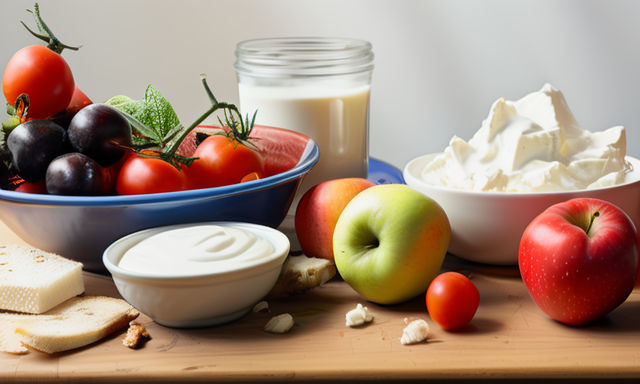200 Calories of Different Foods Video
When it comes to understanding portion sizes and nutritional content, visualizing what 200 calories look like in various foods can be an eye-opening experience. This comparative analysis sheds light on how different foods measure up when you're aiming to consume around 200 calories, revealing the vast differences in volume, nutritional benefits, and satiety they can offer. From the breakfast table to snack time, let's dive into the world of common foods such as cereal, chips, apples, hummus, mayonnaise, orange juice, Greek yogurt, almonds, tomatoes, and bread.
The Caloric Spectrum: From Dense to Nutrient-Rich
200 calories can manifest very differently depending on the food source. This variance highlights the importance of considering both quantity and quality in our dietary habits.
-
- High-Calorie Density Foods: Foods high in fats and sugars, such as fast food, pastries, and candy, pack a lot of calories into small servings. For instance, a small piece of chocolate cake or a few spoonfuls of peanut butter might quickly add up to 200 calories without contributing significant nutritional value or satiety.
-
- Low-Calorie Density Foods: In contrast, fruits, vegetables, and whole grains offer fewer calories for a larger volume of food, allowing you to consume more substantial portions without overshooting your caloric intake. For example, 200 calories can equate to a large bowl of mixed greens with various vegetables, providing not only volume but also essential nutrients and fiber.
Understanding Caloric Impact
The way 200 calories affect your body can vary dramatically based on the food's nutritional composition:
-
- Proteins and Fiber: Foods rich in protein and fiber, such as lean meats, beans, and whole grains, provide a sense of fullness and sustained energy, making them excellent choices for those looking to manage their weight or stay energized throughout the day.
-
- Fats and Sugars: While essential in moderation, foods high in saturated fats and added sugars can lead to energy spikes and crashes, contributing to weight gain and other health issues when consumed in excess.
Visualizing 200-Calorie Portions
To put this into perspective, let's visualize what 200 calories look like in various foods:
-
- Chips: Chips are a go-to for many, but 38g, roughly a small handful, already hit the 200-calorie mark. Often high in sodium and saturated fats, chips might not offer the best nutritional value for their caloric content.
-
- Apples: In contrast, 400g of apples (about 3-4 medium apples) provides 200 calories, along with fiber, vitamins, and hydration. This makes apples an excellent choice for a filling snack that satisfies sweet cravings naturally.
-
- Hummus: 80g of hummus, roughly five tablespoons, offers not only 200 calories but also a good mix of protein, healthy fats, and fiber, making it a nutritious option for snacking or as a meal component.
-
- Mayonnaise: Mayonnaise packs a caloric punch, with just 30g (about two tablespoons) amounting to 200 calories. Given its high-fat content, it's best used sparingly to add flavor to dishes.
-
- Orange Juice: 1.5 cups of orange juice can quickly add up to 200 calories. While providing vitamin C, juice lacks the fiber found in whole fruits and can lead to a quicker spike in blood sugar levels.
-
- Greek Yogurt: 350g of Greek yogurt, roughly 1.5 cups, not only reaches the 200-calorie mark but also provides a substantial protein boost along with probiotics for digestive health, making it a hearty snack or breakfast base.
-
- Almonds: 32g of almonds, about a small handful, offer 200 calories along with healthy fats, protein, and fiber. Their satiating properties make them an excellent snack for energy and nutrient intake.
-
- Tomatoes: At 1.2kg, a generous amount of tomatoes equates to 200 calories, highlighting their low-calorie density and making them ideal for adding volume and nutrients to meals without significantly increasing caloric intake.
-
- Bread: 80g of bread, roughly two slices depending on the type, hits the 200-calorie mark. Opting for whole-grain varieties can enhance nutritional value by providing more fiber and nutrients.
*Note: The caloric values provided may vary depending on specific products or brands.

Making Informed Dietary Choices
Understanding the caloric and nutritional content of foods empowers individuals to make informed choices aligned with their dietary needs and health goals. For instance, someone focusing on weight loss might prioritize low-calorie, nutrient-dense foods that offer satiety without excessive calorie intake. Conversely, someone looking to increase their energy intake might incorporate more energy-dense foods while still balancing overall nutritional intake.
Conclusion
Ready to level-up?
Create meal plans 10x faster, follow up with your clients through our mobile app, and never struggle with meal planning or recipe management again.